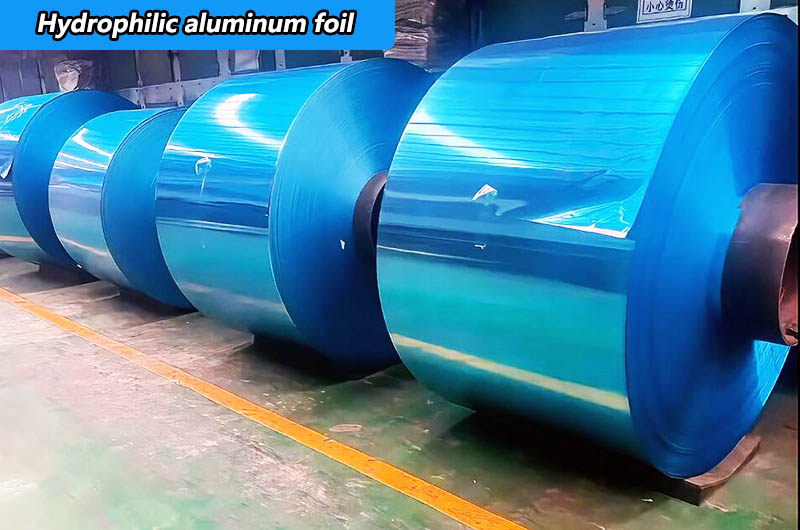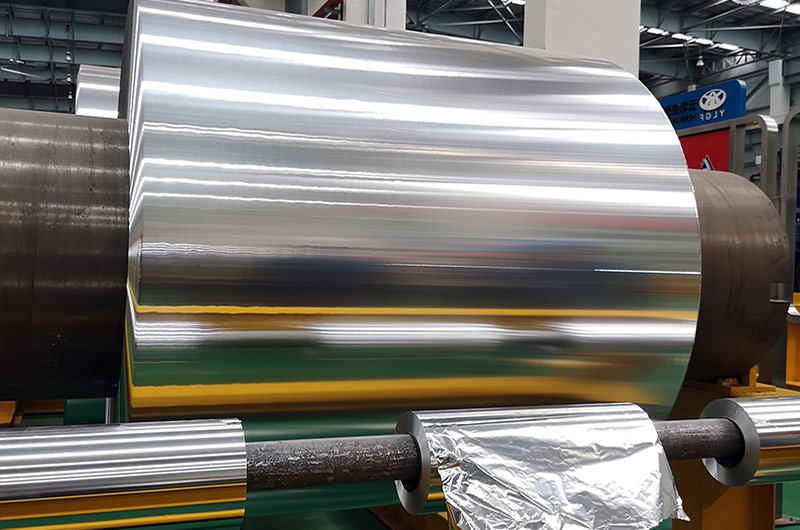What are the main performance indicators of hydrophilic aluminum foil?
Answer: Hydrophilic.
Simply speaking, hydrophilicity is the affinity between the aluminum foil surface and water, measured by the angle formed by water droplets on the aluminum foil surface.
The angle of water droplets on the surface of ordinary aluminum foil is above 70 degrees, while the angle of water droplets on the surface of hydrophilic aluminum foil is below 35 degrees.
This seemingly subtle difference is the key to numerous advantages, especially in air conditioning systems.

10 Performance Indicators of Hydrophilic Aluminum Foil
Hydrophilic aluminum foil has a variety of applications, especially in the manufacture of air conditioning systems and heat exchangers. The hydrophilic coating on aluminum foil enhances its performance by promoting the absorption of water and moisture. The following are some key performance indicators of hydrophilic aluminum foil:
1. Hydrophilicity
The primary performance indicator is the foil's ability to attract water and disperse it across its surface. A higher degree of hydrophilicity promotes condensation and prevents water droplets from forming, ensuring efficient heat exchange.
2. Contact angle
A lower contact angle indicates better wetting properties. The contact angle is the angle formed by the water droplet and the surface of the aluminum foil. Lower angles indicate improved water diffusion and adhesion.
Hydrophilic aluminum foil is used in air conditioning heat exchangers mainly to improve heat exchange efficiency. Hydrophilic Aluminum Foil By virtue of its hydrophilic nature, the foil facilitates closer interaction with water, resulting in efficient heat transfer. The reduced angle of the water droplets ensures a more even distribution on the surface, optimizing the heat exchange process.
3. Water absorption rate
This refers to how quickly a hydrophilic coating absorbs water. For effective moisture management, higher absorption rates are generally required.
4. Corrosion resistance
The hydrophilic coating should provide adequate protection against corrosion as aluminum foil may be exposed to moisture and various environmental conditions.
5. Adhesion
The strength of the hydrophilic coating's bond to the aluminum substrate is critical to long-term performance. Strong bonding ensures the coating remains intact under handling, molding and use conditions.

6. Thermal conductivity
The thermal conductivity of hydrophilic aluminum foil should be maintained or improved compared to uncoated foil. This is important for efficient heat transfer in applications such as air conditioning and refrigeration.
7. Durability
Hydrophilic coatings should be durable and resistant to wear during the manufacturing process and practical applications. This includes resistance to scratches, abrasions and chemical exposure.
8. Coating uniformity
The hydrophilic coating should be evenly applied to the aluminum foil surface to ensure consistent performance. Uneven coatings can cause uneven wetting and reduce efficiency.
9. Aging resistance
Hydrophilic coatings should be designed to resist degradation over time, especially when exposed to heat, humidity, and other environmental factors.
10. Cleanability
The hydrophilic coating should facilitate cleaning of the aluminum foil surface. This is important to maintain the efficiency of the heat exchange surface over the long term.
Manufacturers and users of hydrophilic aluminum foil evaluate these performance indicators to ensure optimal performance and service life in a variety of applications, particularly in heating, ventilation, air conditioning (HVAC) and refrigeration systems.
Conclusion
Fins with good hydrophilicity can improve the heat exchange efficiency of the air conditioner heat exchanger, significantly save electricity consumption, and effectively reduce the spacing between the heat exchanger fins, thereby reducing the volume of the air conditioner, and thus achieving Beautify the appearance of the air conditioner and improve room space utilization for household air conditioners.
Air conditioners equipped with hydrophilic aluminum foil can significantly reduce electricity consumption, contributing to cost savings and environmental sustainability. This shift toward energy efficiency is in line with the global trend of prioritizing environmentally friendly technologies.
Informations you may be interested in:
- Which is better, hydrophilic aluminum foil or copper foil for air conditioners
- Hydrophilic aluminum foil vs non-hydrophilic aluminum foil
- Solutions to hydrophilic aluminum foil problems
- What is Hydrophilic Aluminum Foil?
- What components in air conditioning systems use aluminum foil?
- How is aluminum foil used for thermal insulation in air conditioning systems?
- Can aluminum foil be used in outdoor air conditioning units?
- Comprehensive analysis of air conditioning aluminum foil: classification and applications
- What kind of material is air conditioning aluminum foil made of and what are its
- 1050 Versatility in Air Conditioner Aluminum Foil Applications


